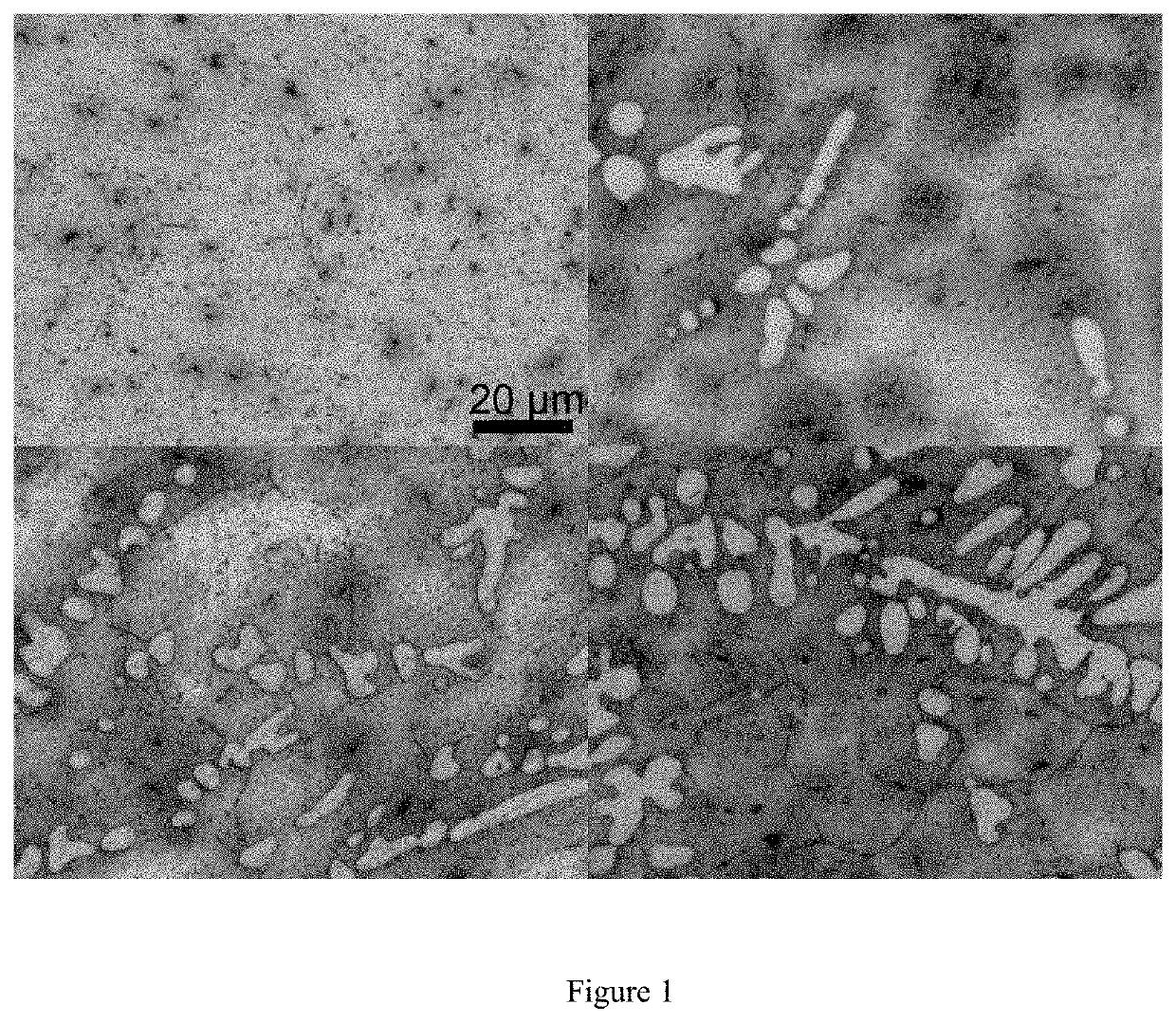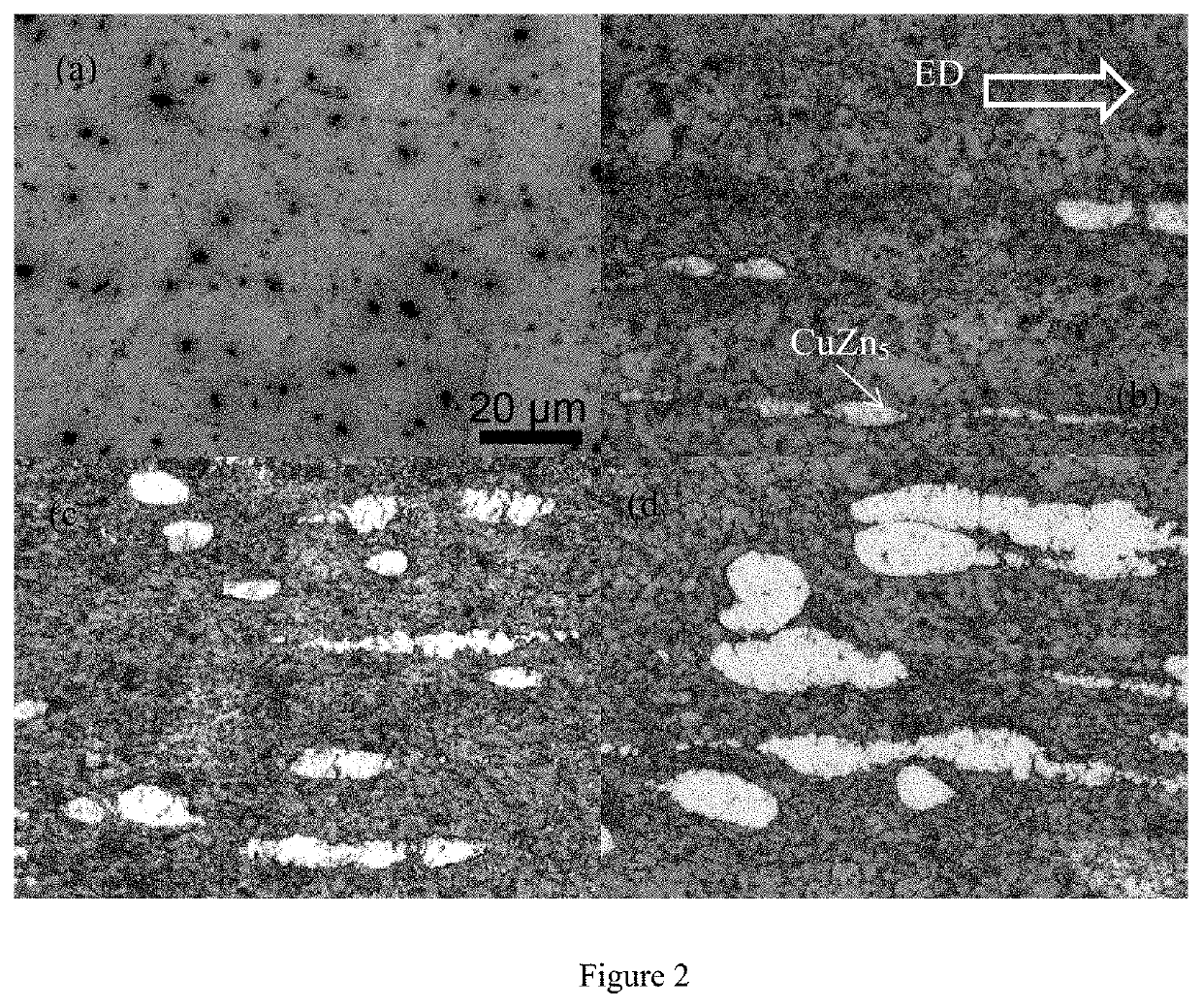Medical biodegradable zn-cu alloy and its preparation method as well as applications
a biodegradable, zinccopper alloy technology, applied in the field of medical materials, can solve the problems of increasing pain, financial burden, and difficulty in re-implanting vascular stents, and achieves good corrosion resistance, good mechanical properties, and easy processing properties.
- Summary
- Abstract
- Description
- Claims
- Application Information
AI Technical Summary
Benefits of technology
Problems solved by technology
Method used
Image
Examples
embodiment 1
[0030]Zn-Cu alloy ingots are obtained by using current traditional melting and casting process of electric resistance furnace. Brass or pure copper is added and melting is kept at 550° C. for one hour until brass or pure copper is melted completely after pure zinc is heated and melted completely in electric resistance furnace. After stirring the melt for 10˜15 minutes, removing slag, standing for 10˜30 minutes, and casting, as-cast Zn—Cu binary alloy ingots are then obtained. Microstructure of four representative Zn-xCu (x=1, 2, 3, 4 wt. %) alloys is shown in FIG. 1. Raw materials are pure zinc (99.995%) and brass (Cu-38 wt. %Zn) or pure copper (99.99%). The secondary phase of four binary alloys described above is CuZn5 phase (white dendritic secondary phase), as shown in FIG. 1. Biocompatibility test indicates that all the four Zn—Cu binary alloys described above exhibit good biocompatibility without obvious cytotoxicity.
embodiment 2
[0031]Four representative Zn-xCu (x=1, 2, 3, 4 wt. %) alloys described in embodiment one are homogenized at 360° C.˜380° C. for 8 hours. And then the alloys are extruded at 280° C. with extrusion ratio of 9:1, as a result of which more uniform and finer microstructure of as-extruded rods or plates can be obtained. In this way, the properties of the alloys are improved. Microstructure of as-extruded alloys is shown in FIG. 2. After extrusion, the secondary phase is crushed, lengthened and distributes along the extrusion direction. Grain size of as-extruded alloys is refined of 1˜10 μm. The results of tensile test in room temperature are shown in Table 1. The yield strength (YS), ultimate tensile strength (UTS) and elongation values of the Zn-Cu binary alloys can reach 150˜230 MPa, 187˜271 MPa and 22˜55%, respectively. The corrosion rate of Zn—Cu binary alloys measured in hank's solution at 37° C. is about 0.02˜0.2 mm year−1. These properties meet the requirements of biodegradable med...
embodiment 3
[0033]Zn-1Cu alloy described in embodiment one is machined into plate of 10 mm in thickness and then rolled at 350° C., of which the amount of deformation of each rolling pass is about 10%. At last, plate of 2 mm in thickness can be obtained. The UTS, YS and elongation values of plates along rolling direction are 210 MPa, 160 MPa and 19.8%, respectively. The corrosion rate of this plate measured in hank's solution at 37° C. is about 0.18 mm year−1. These properties meet the requirements of biodegradable medical materials for clinical application and Zn-1Cu binary alloys are proper for fabricating bone implants like bone plates.
PUM
| Property | Measurement | Unit |
|---|---|---|
| weight | aaaaa | aaaaa |
| ultimate tensile strength | aaaaa | aaaaa |
| ultimate tensile strength | aaaaa | aaaaa |
Abstract
Description
Claims
Application Information
 Login to View More
Login to View More - R&D
- Intellectual Property
- Life Sciences
- Materials
- Tech Scout
- Unparalleled Data Quality
- Higher Quality Content
- 60% Fewer Hallucinations
Browse by: Latest US Patents, China's latest patents, Technical Efficacy Thesaurus, Application Domain, Technology Topic, Popular Technical Reports.
© 2025 PatSnap. All rights reserved.Legal|Privacy policy|Modern Slavery Act Transparency Statement|Sitemap|About US| Contact US: help@patsnap.com


